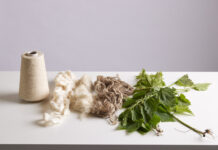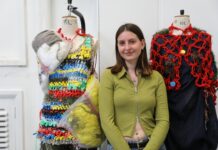Paris
Shabby chic, bright stripes and eco responsibility set the tone at leading Paris fabrics show.
Premiere Vision, which took place in Paris from 8-10 February, represented another stage in the fashion and textiles world coming back to normal. It is clear that the past two years saw the speeding up of several changes, which had already begun.
Fashion direction for 2023 is more fluid, as buying habits and expectations change and various themes come into play. There are no certainties, but many contrasts: which are found including knitwear, natural and synthetic, light and dark, bright and subtle, lightweight and heavy, smooth and 3D, streetwear and tea party chic, the seasons blending into each other.
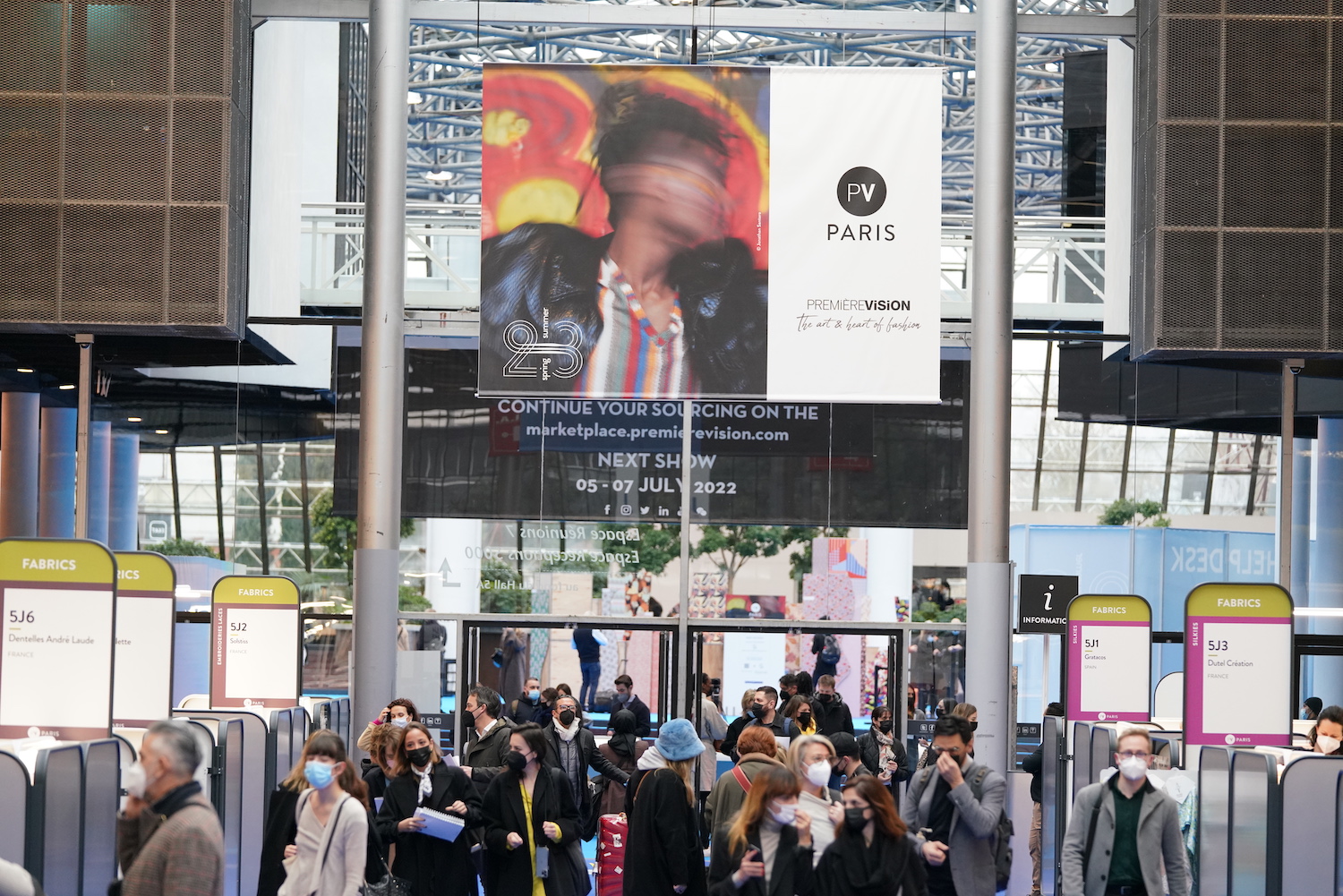
Companies operating at the middle to upper end of the market believe that customers will make their individual choices and are prepared to pay more if they are underpinned by an ethical approach. This has been hoped for by the trade and is having a considerable impact from the emphasis at PV.
Eco was the term used almost as much as the term sustainable; perhaps it is a concept simpler and easier to apply to different stages of the industry with different demands. Eco-responsibility is a word that many companies use, it goes from choice of fibres, yarns dyes, printing, or re-use, difficult when derived from petroleum-based materials, and also most blends. And at last, the ultimate disposal of clothes which do not degrade.

Alternative materials are being put forward in all sorts of areas including responsible tanning processes, and environmentally friendly finishing. Some dyeing processes are now waterless, linking technology with a wish to emphasise the natural, as well as performance qualities, leaving them as natural looking as possible.

New inventions blended wool, linen or cotton, silk or cashmere with newer plant-based eco cellulosics; Ecovero by Lenzing, Naia by Eastman, new ingredients like graphene used with Merino wool for extra performance in knitted sportswear, ticking boxes for sustainability all along the timeline.
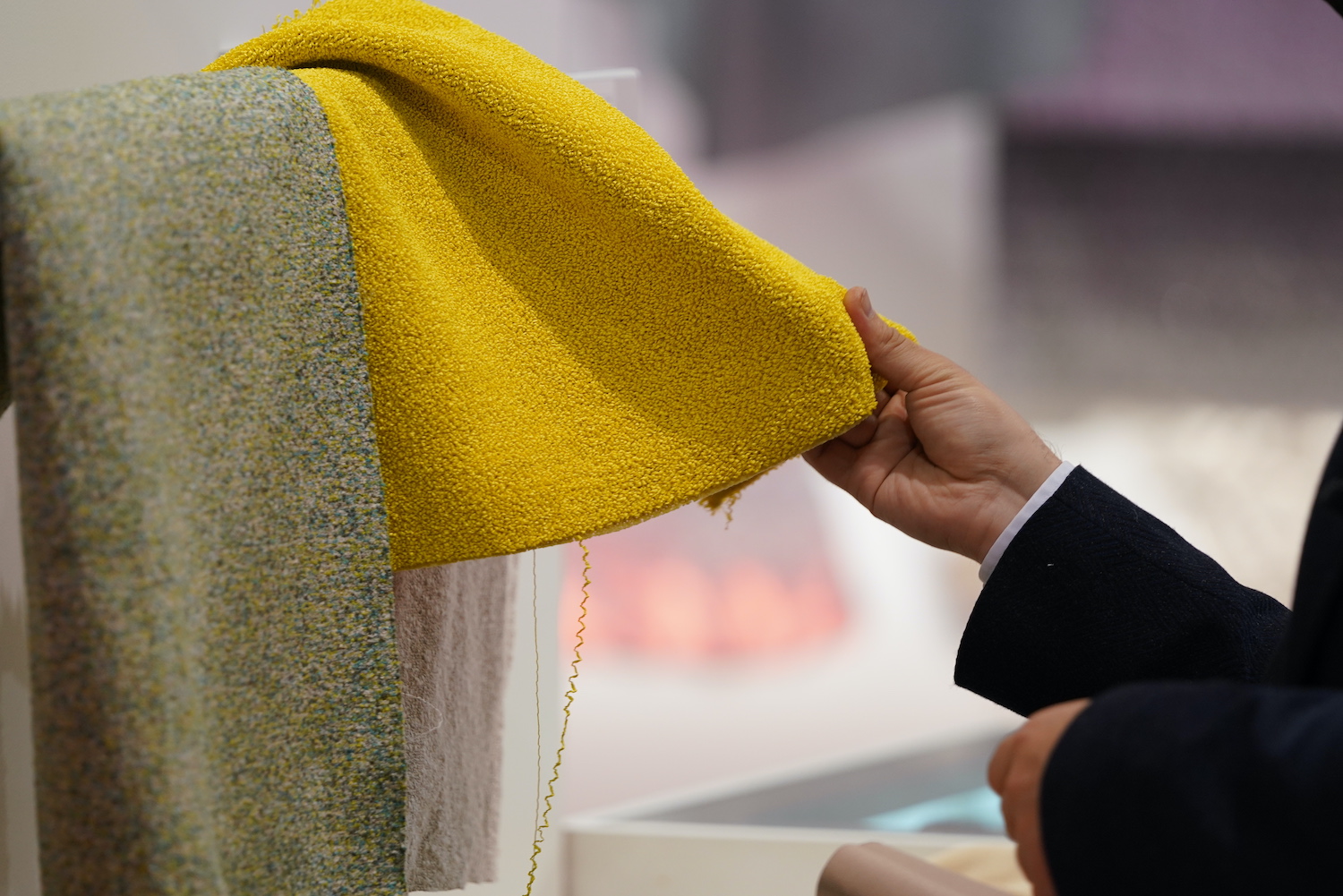
The Woolmark Company demonstrated the revamped Wool Lab launched with a large number of sourcing references, showing technological developments in yarns for serious sportswear and active accessories, most of them knitted, showcasing developments for the season.
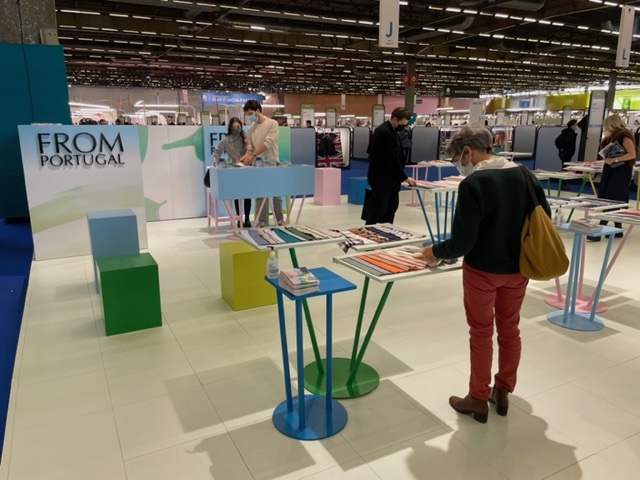
The movement on limiting plastics by recycling also involves reducing the synthetic component of fabrics. This season they are essential for the ever-popular shine and sparkle seen on knitted fabrics with metallic fibres and sparkle built into the yarns.
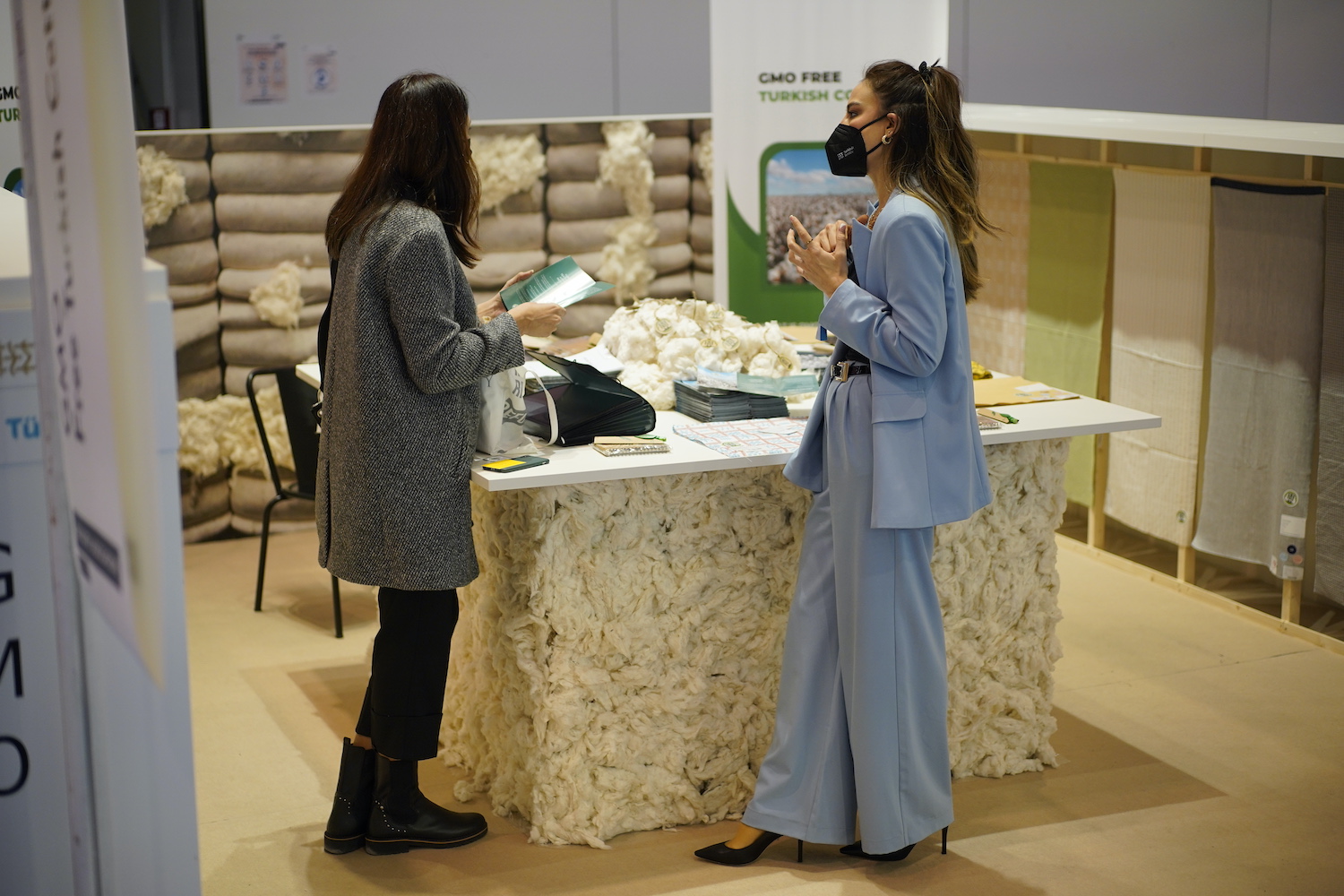
The accessories selection showed some entirely recycled laces, ribbons, zippers and labels out of recycled pre-consumer and post-consumer cotton and paper. The relationship between the natural and science, is expressed by Fashion Tech, the umbrella name used for textile developments.
There is a synergy of ambition, from expensive research and development carried out by large companies to mitigate pollution with extensive testing and certification. It coincides with the search by fashion chains, designers and companies, reacting to customers’ needs who have published pathways and ambitions for green business in their manifestos but who have found it difficult to fulfil them.
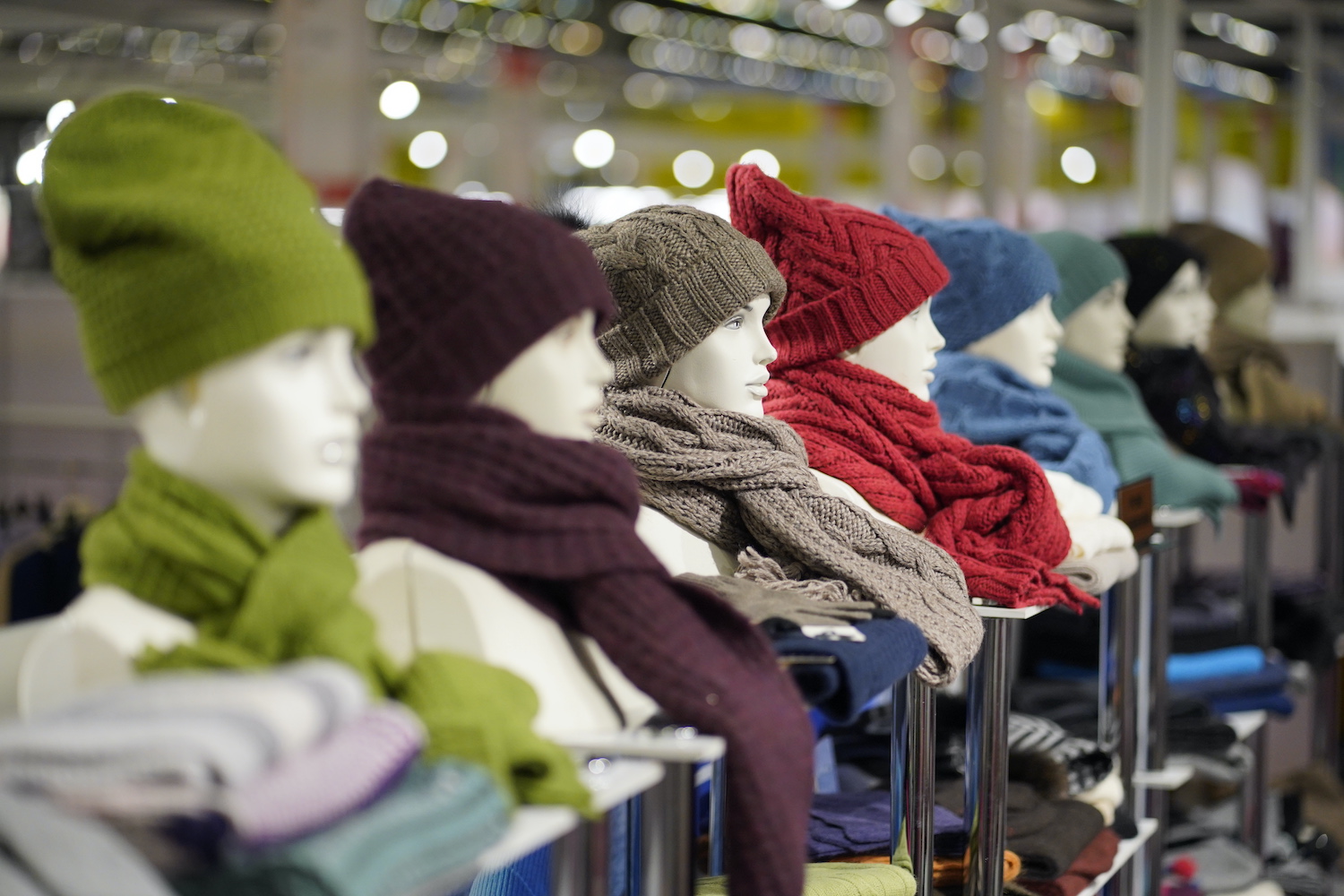
On this point a conference was held by European linen on the second day showing how engaged the clothing industry is with what is called the creative agri-sector, working towards ecological transition. The European Confederation of Flax and Hemp (CELC) is the first agri-industrial textile sector to measure its environmental impact according to the new Product Environmental Footprint (PEF) method created by the European Commission. It nevertheless has proved controversial in some areas, but accords very well with others. A streamed discussion group was held on the second day of the show.
Slogans adopted by PV and exhibitors had an optimistic view such as “the world will be waking up and adjusting after a long period of restrictions and uncertainty,’’ at Peclers the fashion forecasters. Sustainable, High-Performance and Plentiful symbolising the silky-like fabrics printed with graffiti flowers and motifs shown so big that they looked like cheerful wall paper, or small flowery shapes in floral colours.

The move to recycling was made more newsworthy, when just before the opening of PV, French President Emmanuel Macron and Eastman Board Chair and CEO Mark Costa announced Eastman’s plan to invest up to $1 billion in a material-to-material molecular recycling facility in France. This facility aims to use Eastman’s polyester renewal technology to recycle up to 160,000 metric tonnes annually of hard-to-recycle plastic waste that is currently being incinerated.
Eastman’s Naia fibre has been adopted by high profile designers, spun from by product cotton linter, it is in the spirit of the times exhibited on the Smart Creation section.

Colours for knits and knitwear are growing brighter – they range from soft to bright pink, white, green, with yellow showing up as an accent colour throughout the exhibition area. However, a lot of knitwear is pale and natural: wool, linen or cotton or mixes, sometimes with an antique look. Handles were both sensory and with some sturdy thicker yarns, described poetically by PV as bucolic.
Blue, from sky to navy; pink and red, huge swathes of white, made contrasts between virtual and real, natural and artificial. The natural fibres enhanced with synthetic shines, finishes or colour, as well as sometimes presenting fabrics in a natural, naïve look harking back to the fascination with discovery of ethnic influences, put together with serendipity.
Sustainability has been the word at the major fabric and yarn shows of the past few seasons, interpreted in different ways. PV was not expected to be as busy as it has been for the past decade, after the ravages of the two years of pandemic, situated in Halls 6, 5 and 4 r. It may have been reduced in size but not in industry value backed up by the PV market online kicking in after the show.
Guided tours around the various parts of the show online with live video took viewers to briefly meet various exhibitors for those who were remote visitors or participating in the PV Market. Another vote for the hybrid version. 74,600 visitors, up 18% since September 2021.

Subscribe To Our Newsletter
Join our mailing list to receive the latest news and updates from our team.










